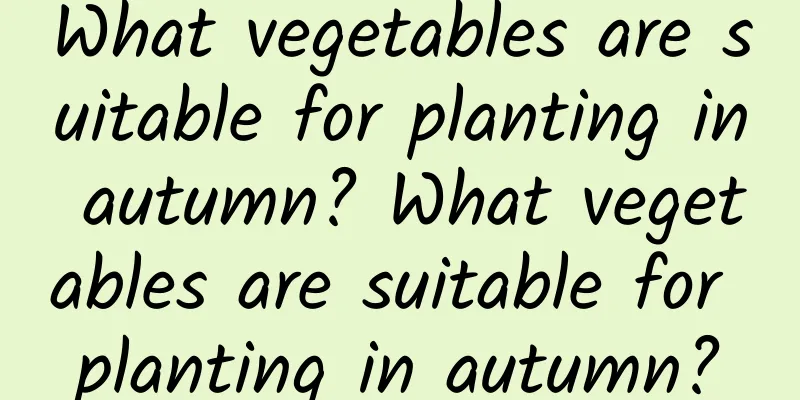What vegetables are suitable for planting in autumn? What vegetables are suitable for planting in autumn?

|
In autumn, you can plant more cold-resistant vegetables so that they will not be damaged by frost when winter comes, such as cabbage, radish, cucumber, tomato, pepper, Chinese cabbage, broccoli, green beans, potatoes, spinach, coriander and other vegetables. 1. Broccoli Broccoli is extremely cold-resistant. If it is sown in autumn, it can resist frost and grow well. Broccoli has a cute appearance and high nutritional value, ranking first in the average nutritional value and disease prevention function of vegetables. 2. Potatoes Potatoes are a common vegetable in winter. They are suitable for planting in spring and autumn. The temperature and humidity in autumn are suitable for the growth of potatoes. Potatoes are rich in nutrients and can be made into a variety of delicious foods such as French fries, potato chips and mashed potatoes. They are very worth planting. 3. Coriander Coriander has a unique taste and is a common side dish. Of course, some people cannot stand its aroma. Coriander is best planted in the autumn of each year. Just sow the seeds into the soil and keep the soil slightly moist. The mature coriander can be harvested in about 50 days. 4. French beans In addition to choosing to sow green beans in spring, you can also plant them in autumn. Green beans are not resistant to high temperatures, but they have a certain degree of resistance to low temperatures. Therefore, it is very suitable to plant green beans after the high temperatures in midsummer. Generally, green beans will bloom and bear fruit after 2 months. Tips for growing vegetables in autumn1. Planting method: Before planting vegetables in autumn, the soil needs to be rearranged. It is best to deep plow and then expose it to the sun. This can help kill bacteria and fertilize the soil. Weeding is also very important because weeds also need to absorb nutrients. If there are too many weeds, it will lead to nutrient loss. 2. Temperature management: Vegetables require certain temperatures for growth. After planting in autumn, try to ensure the appropriate temperature, especially for greenhouse planting. The temperature should be kept at around 22 degrees. This is mainly to help prevent frost damage. 3. Water and fertilizer management: Because the weather in autumn is very dry, vegetables whose roots and stems grow in the soil must be watered more frequently. They must not be allowed to dry out. However, they should not be watered too much at one time. When fertilizing, it is best to choose farmyard manure to ensure sufficient fertilizer. |
<<: How to deal with Kalanchoe after it blooms? How to prune after it withers
>>: What vegetables are best to grow in May?
Recommend
How to prolong the flowering period of Gardenia
1. Sunlight Many friends think that gardenia like...
How to prune potted mulberry trees
Pruning time for potted mulberry trees Usually, t...
In which month is coriander usually planted?
Which month is suitable for planting coriander? C...
How to deal with the old piles dug up
1. Treat the roots If you have just dug it up, yo...
Apple tree management technology in December
With the arrival of December, heavy snow and the ...
How to grow succulent maiden heart
Succulent Maiden Heart Growth Conditions The succ...
How to water golden sedge
Watering method during the growing season Golden ...
Corn sowing time and method
Corn is an annual herbaceous plant of the genus Z...
How deep should water lilies be planted?
Water lilies have a long history of cultivation i...
How to increase the yield of peanut planting (teaching you seven tips for increasing peanut production and management)
Peanuts, like other crops, have their own growth ...
How to restore Phnom Penh with Tiger Pilan
1. Reasons for the disappearance of Phnom Penh Th...
When is the lilac flowering season?
1. Flowering period There are many varieties of l...
How to plant the roots of Flammulina velutipes
1. Root cutting When buying fresh enoki mushrooms...
Gardenia succulent... drink a drink and 40 flower buds will appear on one branch!
Water the roses with onion water to make the flow...
How to graft a plum tree
The best time to graft plum trees is around July ...









